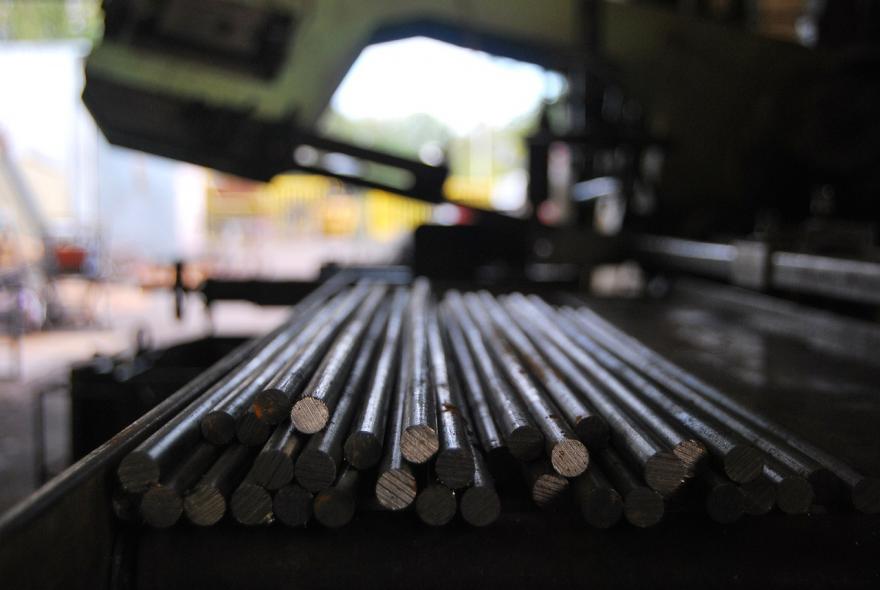1. Classification of Metal Materials
(1) Ferrous Metals
Ferrous metals are materials in which iron is the main component. They include the following categories:
Carbon Steel: Low-carbon steel, medium-carbon steel, high-carbon steel
Uses: Construction, machinery manufacturing, tools, etc.
Alloy Steel: Low-alloy steel, high-alloy steel (such as stainless steel)
Uses: Chemical equipment, aerospace, medical instruments, etc.
Cast Iron: Grey cast iron, ductile cast iron, malleable cast iron
Uses: Engine components, machine tool beds, pipes, etc.
(2) Non-ferrous Metals
Non-ferrous metals refer to metals and alloys other than iron and carbon. They are mainly divided into:
Light Metals:
Main metals: Aluminum (Al), Magnesium (Mg), Titanium (Ti)
Main alloys: Aluminum alloy, Magnesium alloy, Titanium alloy
Uses: Aerospace, transportation vehicles (automobiles, ships), electronic product casings, etc.
Heavy Metals:
Main metals: Copper (Cu), Zinc (Zn), Lead (Pb), Tin (Sn), Nickel (Ni)
Main alloys: Brass, Bronze, White copper
Uses: Electrical equipment (copper wire), mechanical parts, decorations, corrosion-resistant parts, etc.
Precious Metals:
Main metals: Gold (Au), Silver (Ag), Platinum (Pt), Palladium (Pd)
Uses: Jewelry, electronic components, catalysts, etc.
Rare Metals:
Main metals: Tungsten (W), Molybdenum (Mo), Lithium (Li), Beryllium (Be), Zirconium (Zr), Tantalum (Ta)
Uses: High-temperature materials, nuclear industry, aerospace, etc.
(3) Special Metal Materials
High-Temperature Alloys: Based on Nickel (Ni), Cobalt (Co), or Iron (Fe), suitable for high-temperature environments.
Uses: Aircraft engines, gas turbines.
Corrosion-Resistant Alloys: Such as Hastelloy, Monel alloys, with excellent corrosion resistance.
Uses: Chemical equipment, marine engineering, etc.
Shape Memory Alloys: Such as Nickel-Titanium (NiTi) alloy, exhibiting shape memory effect.
Uses: Medical devices, aerospace, etc.
Magnetic Materials: Permanent magnets (Neodymium-Iron-Boron), soft magnetic materials (Silicon steel).
Uses: Electric motors, transformers, electronic devices, etc.
(4) Powder Metallurgy Materials
These are metals manufactured using powder metallurgy processes, which offer high precision and uniformity.
Uses: Gears, hard alloy cutting tools, aerospace components, etc.
(5) Composite Metal Materials
Composite materials made by combining two or more types of metal materials, such as composite plates, composite tubes, etc.
Uses: Corrosion-resistant linings, conductive materials, etc.

2. Density Comparison of Common Metal Materials (Unit: g/cm³)
(1) Ferrous Metals
Pure Iron: 7.87
Carbon Steel: 7.85
Alloy Steel: 7.7–8.0 (depending on alloy composition)
Cast Iron: 7.0–7.8
(2) Non-ferrous Metals
Light Metals
Aluminum (Al): 2.70
Aluminum Alloy: 2.6–2.8
Magnesium (Mg): 1.74
Magnesium Alloy: 1.7–1.9
Titanium (Ti): 4.51
Titanium Alloy: 4.4–4.8
Heavy Metals
Copper (Cu): 8.96
Brass: 8.4–8.7
Bronze: 7.5–8.9
Tin (Sn): 7.28
Lead (Pb): 11.34
Zinc (Zn): 7.14
Nickel (Ni): 8.90
Precious Metals
Gold (Au): 19.32
Silver (Ag): 10.49
Platinum (Pt): 21.45
Rare Metals
Tungsten (W): 19.25
Molybdenum (Mo): 10.22
Lithium (Li): 0.53
Beryllium (Be): 1.85
Zirconium (Zr): 6.51
Tantalum (Ta): 16.65
(3) Special Metal Materials
High-Temperature Alloys: 7.8–9.0 (depending on matrix and composition)
Shape Memory Alloys (e.g., NiTi alloy): 6.4–6.5
Magnetic Materials (e.g., Neodymium-Iron-Boron): 7.3–7.5
(4) Composite Materials
The density of composite materials depends on the base metal and composite components used, usually calculated based on specific ratios.
These density values are important reference data for engineering design and can be used to calculate material weight, strength, and other key parameters.



